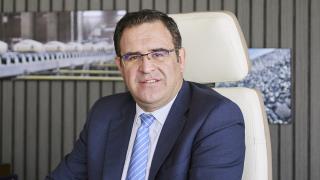VDZ GmbH will be delivering a presentation on the optimisation of the clinker burning process when using alternative fuels at Cemtech Middle East & Africa, held between 17-20 February 2018. Nijat Orujov, senior consultant for environment and plant technology, offers a glimpse of what he will be discussing in February.
ICR: How should cement companies prepare to use alternative fuels in their plants?
Nijat Orujov (NO): It is essential that alternative fuels used in the clinker burning process meet closely defined quality criteria, with regards to their physical properties and chemical composition. The parameters must ensure that there will be no detrimental change in emissions and that the product quality will not suffer. Cement plants should therefore secure stable waste streams with defined criteria in advance.
Waste in an untreated and unsorted form is not suitable for use as an alternative fuel in cement kilns, instead it requires pre-treatment and strict quality control. It is also crucial to ensure that the average input of elements which are not part of the cement mineralogy, remain more or less the same when substituting standard fuels. In many cases, keeping to these standards can only be achieved by appropriate pre-treatment and conditioning of the alternative fuels.
ICR: What can a plant realistically achieve in one year, starting from scratch?
NO: Starting with alternative fuels usually takes more than one year, but it depends on the availability of a usable and economically feasible waste stream. Once all necessary pre-treatment logistics are in place and the appropriate legal requirements are met, a cement plant can begin designing a feeding system to supply alternative materials into the existing pyro-process.
ICR: What is the quickest way to introduce alternative fuels into the process?
NO: In a similar manner to the previous question, this also depends on the waste stream. Materials with good flow characteristics can be introduced into the kiln system faster than others. In this scenario, simple equipment can be purchased and the fuel can be introduced in separate pipes either into the kiln hood or calciner. Furthermore, permits for tests can often be obtained without major legal complications.
ICR: Can a high TSR be achieved in the Middle East & Africa region?
NO: Utilisation of alternative fuels can be achieved in any location where necessary pre-treatment companies are available and usable alternative fuels can be supplied. However, the legal requirements should also be taken into account.
ICR: How can issues with the technical limitations of alternative fuel usage be overcome?
NO: The introduction of alternative fuels into the cement production process needs comprehensive plans and consistent project oversight. The person assigned to the project should work out a concept to overcome any legal or equipment issues that may arise, and must thoroughly study the waste fuel market.
Alternative fuel utilisation at a high TSR involves certain technical limitations, such as calorific value and concentration of trace elements or chlorine in wastes. The higher the chlorine and sulphur content the stronger the possible coating formation. In the case of alternative fuel use, high chlorine content may therefore be a limiting factor or require the use of a bypass. We used a bypass system in Europe at a kiln inlet and it allowed us to effectively reduce alkali chloride cycles and therefore diminish operational disturbance.
Nijat Orujov will be speaking at the forthcoming Cemtech Middle East & Africa 2018, taking place in Dubai (UAE) on 17-20 February. To register, visit www.Cemtech.com/MEA2018
